
LOADING ...
In response to evolving domestic opinion, eMedals Inc has made the conscious decision to remove the presentation of German Third Reich historical artifacts from our online catalogue. For three decades, eMedals Inc has made an effort to preserve history in all its forms. As historians and researchers, we have managed sensitive articles and materials with the greatest of care and respect for their past and present social context. We acknowledge the growing sentiments put forth by the Canadian public and have taken proactive actions to address this opinion.
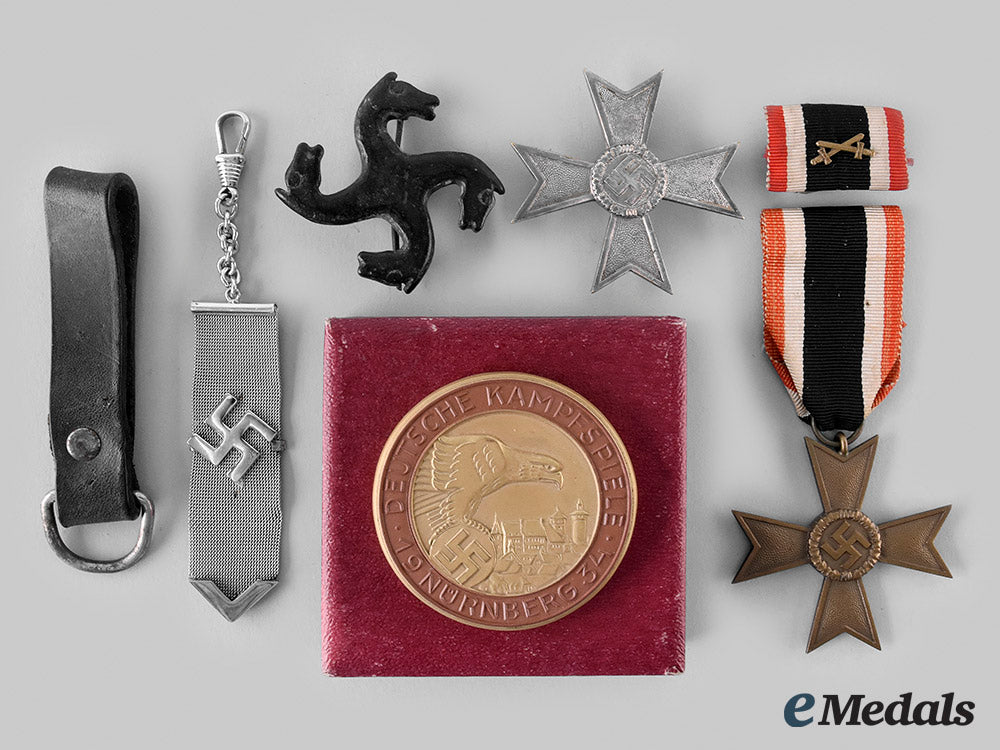
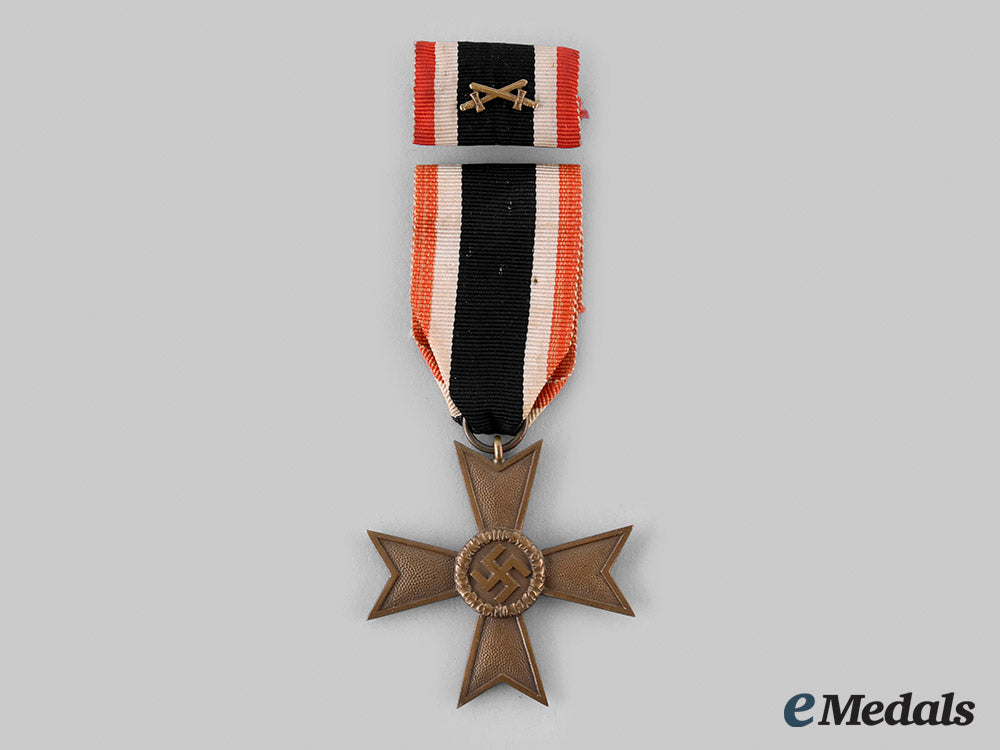
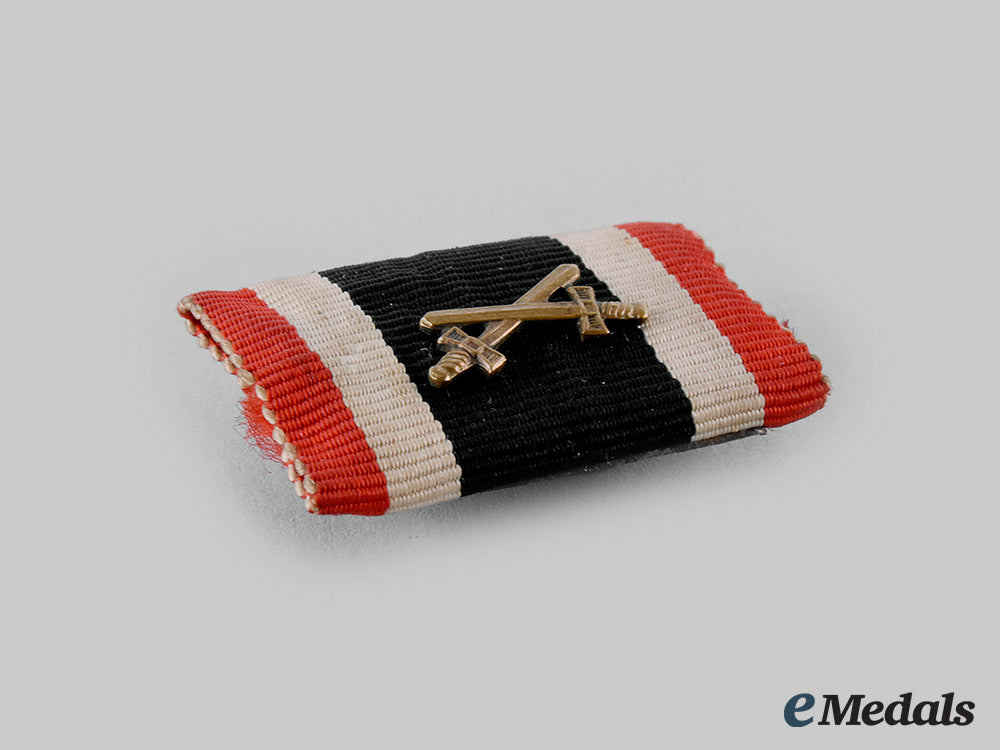
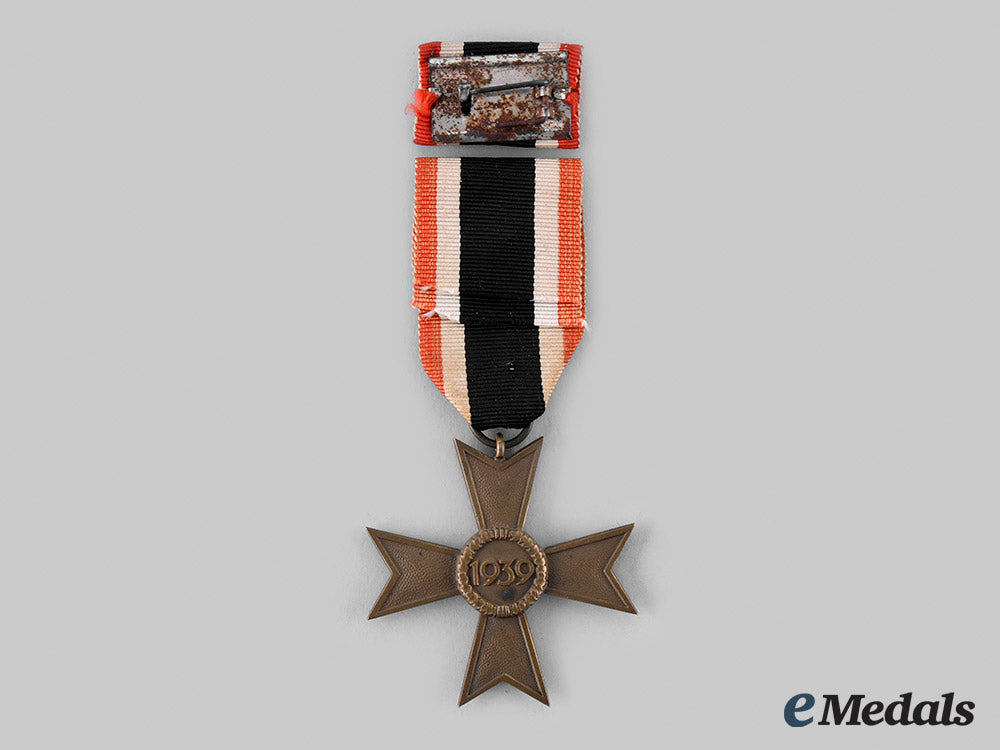

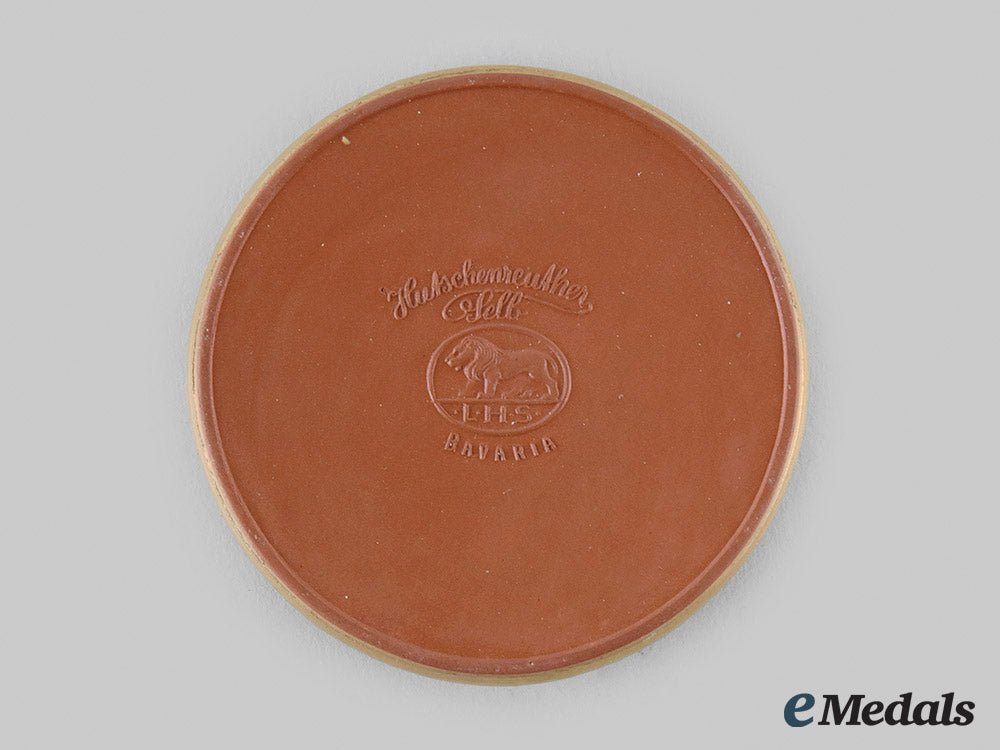
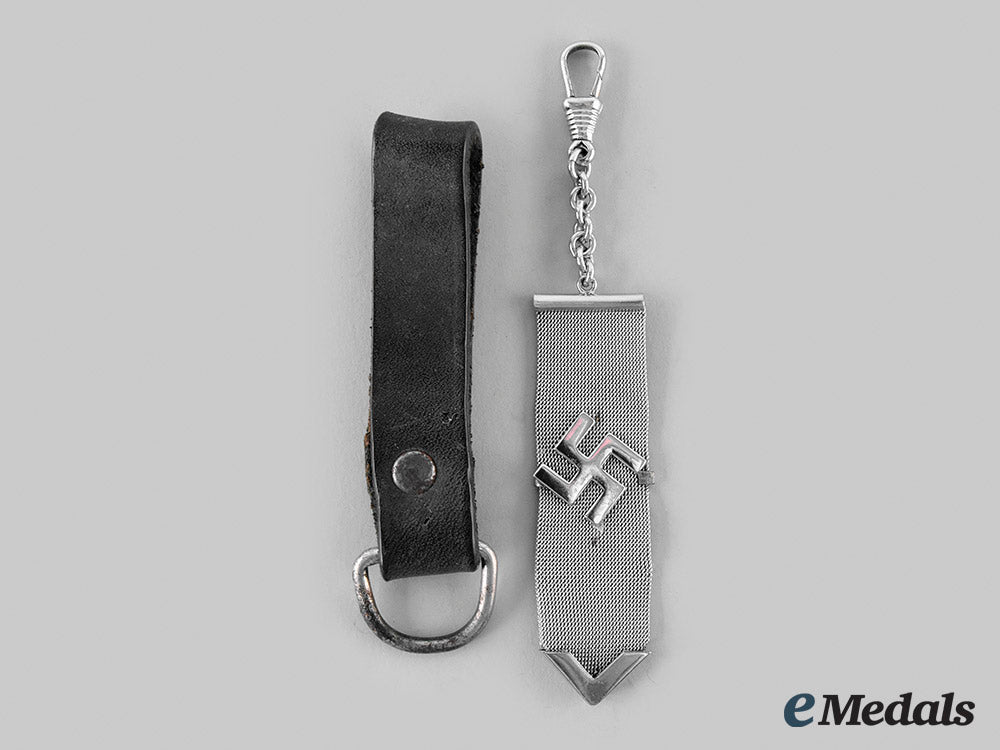
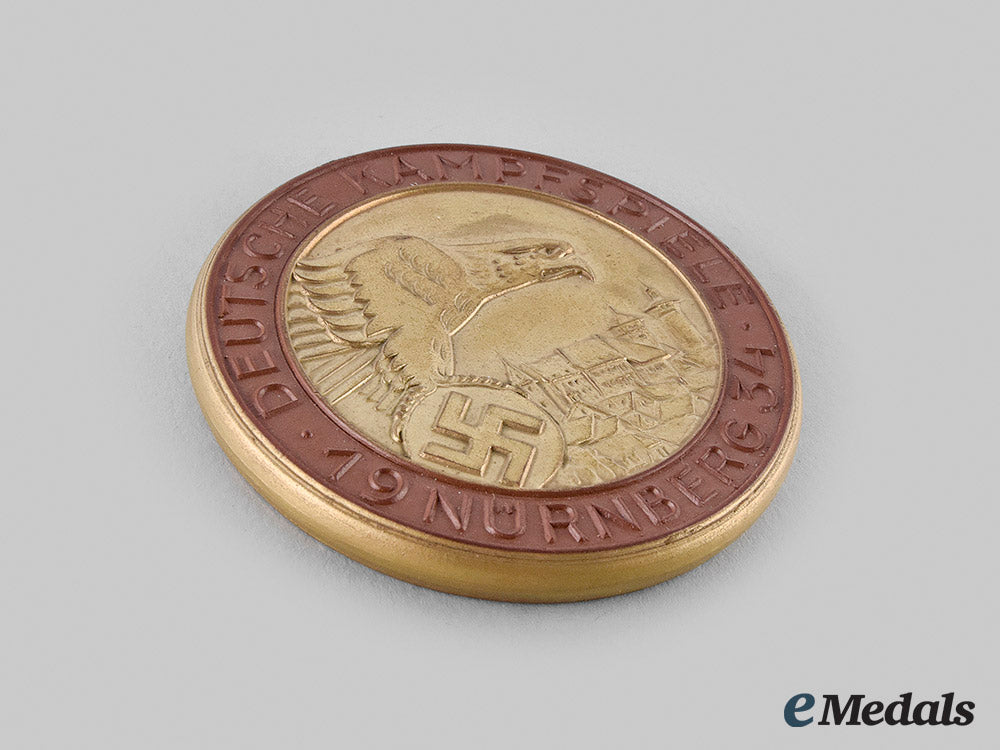
Germany, Nsdap. A Lot Of Medals And Insignia Of Arthur Seyß-Inquart
Germany, Nsdap. A Lot Of Medals And Insignia Of Arthur Seyß-Inquart
SKU: ITEM: G45763
0% Buyer's Premium
Current Bid:
Your Max Bid:
Bid History:
Time Remaining:
Couldn't load pickup availability
Shipping Details
Shipping Details
eMedals offers rapid domestic and international shipping. Orders received prior to 12:00pm (EST) will be shipped on the same business day.* Orders placed on Canadian Federal holidays will be dispatched the subsequent business day. Courier tracking numbers are provided for all shipments. All items purchased from eMedals can be returned for a full monetary refund or merchandise credit, providing the criteria presented in our Terms & Conditions are met. *Please note that the addition of a COA may impact dispatch time.
Shipping Details
eMedals offers rapid domestic and international shipping. Orders received prior to 12:00pm (EST) will be shipped on the same business day.* Orders placed on Canadian Federal holidays will be dispatched the subsequent business day. Courier tracking numbers are provided for all shipments. All items purchased from eMedals can be returned for a full monetary refund or merchandise credit, providing the criteria presented in our Terms & Conditions are met. *Please note that the addition of a COA may impact dispatch time.
Description
Description
A War Merit Cross, I Class, a Maltese cross paty constructed of silvered tombac, the obverse bears a central oak leaf wreathed swastika on a smooth background, the arms are pebbled with smooth borders, the reverse bears a rounded pinback with a flat wire catch, unmarked but bears characteristics of Petz & Lorenz, 49.09 mm (w) x 48.77 mm (h), weighing 18 grams, very fine.
A War Merit Cross, II Class, a Maltese cross paty constructed of bronze, the obverse bears an oak leaf wreathed swastika on a smooth background, the arms are pebbled with smooth borders, the reverse centre bears the date “1939” encompassed by an oak lead wreath, the arms are pebbled with smooth borders, with suspension ring on a black, white and red striped ribbon, measuring 48.52 mm (w) x 49.16 mm (h), weighing 19.2 grams, very fine.
A War Merit Cross with Swords ribbon bar, on a metal backer with horizontal pinback, measuring 30.08 mm (w) x 18.51 mm (h), very fine.
A Medal for Participants of the German Combat Games 1934, a circular table medal constructed of ceramic, the obverse bears the image of an eagle perched atop a disk with a swastika in the centre overlooking Nuremberg, encompassed by a terracotta coloured border with the inscription “DEUTSCHE KAMPFSPIELE 19 NURNBERG 34”, the reverse is plain and marked in the centre “ Hutschenreuther Selb Bavaria” with a lion encompassed by an ovular border, measuring 51.77 mm; accompanied by case of issue, a squared case of faux red pebbled leather, the interior lid is of an off-white satin material inscribed in red with “Gegeben von der Stadt Nurnberg”, the medal bed is of an off-white velvet, measuring 73.47 mm (w) x 20.02 mm (h), very fine.
A Horse Swastika Brooch, constructed of blackened bronze, the obverse is a mobile swastika and the ends of the arms are horse heads, the reverse bears a pinback with flat wire catch, measuring 48.32 mm (w) x 48.19 mm (h), fine.
A black/dark brown leather strap with a “D” ring at one end, measuring 88.21 mm (l), fine.
A Swastika Watch Fob, of silver non-magnetic metal, consisting of a chainmail with a central mobile swastika, topped with a chain with lobster clasp for attachment, the bottom ends with a pointed smooth border, measuring 19.46 mm (w) x 72.39 mm (h), very fine.
Footnote: Arthur Seyß-Inquart was born on July 22, 1892 in the village of Stannern (present-day Stonařov, southern Czech Republic) near the town of Iglau (Jihlava). This was a German speaking community within a Czech dominated area in Moravia, at the time part of the Austro-Hungarian empire. The family moved to Vienna in 1907.
Seyß-Inquart began to study law at the university of Vienna, and earned his degree during the First War in 1917 while recovering from being wounded. As a soldier in the Austro-Hungarian army he saw action in Russia, Romania, and Italy. He received several bravery decorations and at the end of the war held the rank of Oberleutnant (first lieutenant).
After the war, Seyß-Inquart developed close ties with several right wing and fascist organisations, among them the Vaterländische Front (Fatherland Front). He became a successful lawyer and had his own practice since 1921. In 1933, Seyß-Inquart went into Austrian politics and joined the cabinet of chancellor Engelbert Dollfuß.
Through growing influence and support by non other than A.H. himself, Seyß-Inquart eventually became Austrian Minister of the Interior in February of 1938. With the looming annexation of Austria by Germany in March of the same year, Austrian chancellor Schuschnigg stepped down. Seyß-Inquart was chosen as his successor due to immense pressure applied on the Austrian government by the NSDAP.
He served in this position for less than two days, until the Anschluss was completed. Seyß-Inquart signed the documents that legalised the annexation of Austria by Germany. After his office had ceased to exist, he was named Reichsstatthalter (Reich Governor) of the Ostmark, the newly created province that Austria had become as part of Greater Germany.
Being a fanatical anti-Semite, Seyß-Inquart almost immediately ordered the confiscation of Jewish property and had the Austrian Jews sent to concentration camps. He received the honorary SS rank of Gruppenführer in May of 1939, and would go on to become an SS-Obergruppenführer in 1941.
After the attack on Poland at the beginning of the Second War, Seyß-Inquart was named deputy to Hans Frank, the General Governor of occupied Poland. He supported Frank in the deportation of Polish Jews. Seyß-Inquart was also aware of the systematic murder of Polish intellectuals by the German secret service “Abwehr”.
In May of 1940, A.H. named Seyß-Inquart Reich Commissioner of the Netherlands. His policies concerning the Dutch Jews were no different than his policies had been concerning the Jews in Austria and Poland, in that they were ousted from governmental, and leading press and industry positions, their property seized, before being sent to concentration camps. Of the 140,000 Jews that were registered in the Netherlands in 1941, only 30,000 survived the war.
During his reign of terror, Seyß-Inquart also authorized the execution of at least 800 people, ranging from political prisoners to resistance fighters. At the end of the war, he was arrested by Allied forces and became one of the 24 defendants during the Nuremberg trials against the major war criminals. Seyß-Inquart was found guilty in three out of four charges and executed by hanging on October 16, 1946.
Description
A War Merit Cross, I Class, a Maltese cross paty constructed of silvered tombac, the obverse bears a central oak leaf wreathed swastika on a smooth background, the arms are pebbled with smooth borders, the reverse bears a rounded pinback with a flat wire catch, unmarked but bears characteristics of Petz & Lorenz, 49.09 mm (w) x 48.77 mm (h), weighing 18 grams, very fine.
A War Merit Cross, II Class, a Maltese cross paty constructed of bronze, the obverse bears an oak leaf wreathed swastika on a smooth background, the arms are pebbled with smooth borders, the reverse centre bears the date “1939” encompassed by an oak lead wreath, the arms are pebbled with smooth borders, with suspension ring on a black, white and red striped ribbon, measuring 48.52 mm (w) x 49.16 mm (h), weighing 19.2 grams, very fine.
A War Merit Cross with Swords ribbon bar, on a metal backer with horizontal pinback, measuring 30.08 mm (w) x 18.51 mm (h), very fine.
A Medal for Participants of the German Combat Games 1934, a circular table medal constructed of ceramic, the obverse bears the image of an eagle perched atop a disk with a swastika in the centre overlooking Nuremberg, encompassed by a terracotta coloured border with the inscription “DEUTSCHE KAMPFSPIELE 19 NURNBERG 34”, the reverse is plain and marked in the centre “ Hutschenreuther Selb Bavaria” with a lion encompassed by an ovular border, measuring 51.77 mm; accompanied by case of issue, a squared case of faux red pebbled leather, the interior lid is of an off-white satin material inscribed in red with “Gegeben von der Stadt Nurnberg”, the medal bed is of an off-white velvet, measuring 73.47 mm (w) x 20.02 mm (h), very fine.
A Horse Swastika Brooch, constructed of blackened bronze, the obverse is a mobile swastika and the ends of the arms are horse heads, the reverse bears a pinback with flat wire catch, measuring 48.32 mm (w) x 48.19 mm (h), fine.
A black/dark brown leather strap with a “D” ring at one end, measuring 88.21 mm (l), fine.
A Swastika Watch Fob, of silver non-magnetic metal, consisting of a chainmail with a central mobile swastika, topped with a chain with lobster clasp for attachment, the bottom ends with a pointed smooth border, measuring 19.46 mm (w) x 72.39 mm (h), very fine.
Footnote: Arthur Seyß-Inquart was born on July 22, 1892 in the village of Stannern (present-day Stonařov, southern Czech Republic) near the town of Iglau (Jihlava). This was a German speaking community within a Czech dominated area in Moravia, at the time part of the Austro-Hungarian empire. The family moved to Vienna in 1907.
Seyß-Inquart began to study law at the university of Vienna, and earned his degree during the First War in 1917 while recovering from being wounded. As a soldier in the Austro-Hungarian army he saw action in Russia, Romania, and Italy. He received several bravery decorations and at the end of the war held the rank of Oberleutnant (first lieutenant).
After the war, Seyß-Inquart developed close ties with several right wing and fascist organisations, among them the Vaterländische Front (Fatherland Front). He became a successful lawyer and had his own practice since 1921. In 1933, Seyß-Inquart went into Austrian politics and joined the cabinet of chancellor Engelbert Dollfuß.
Through growing influence and support by non other than A.H. himself, Seyß-Inquart eventually became Austrian Minister of the Interior in February of 1938. With the looming annexation of Austria by Germany in March of the same year, Austrian chancellor Schuschnigg stepped down. Seyß-Inquart was chosen as his successor due to immense pressure applied on the Austrian government by the NSDAP.
He served in this position for less than two days, until the Anschluss was completed. Seyß-Inquart signed the documents that legalised the annexation of Austria by Germany. After his office had ceased to exist, he was named Reichsstatthalter (Reich Governor) of the Ostmark, the newly created province that Austria had become as part of Greater Germany.
Being a fanatical anti-Semite, Seyß-Inquart almost immediately ordered the confiscation of Jewish property and had the Austrian Jews sent to concentration camps. He received the honorary SS rank of Gruppenführer in May of 1939, and would go on to become an SS-Obergruppenführer in 1941.
After the attack on Poland at the beginning of the Second War, Seyß-Inquart was named deputy to Hans Frank, the General Governor of occupied Poland. He supported Frank in the deportation of Polish Jews. Seyß-Inquart was also aware of the systematic murder of Polish intellectuals by the German secret service “Abwehr”.
In May of 1940, A.H. named Seyß-Inquart Reich Commissioner of the Netherlands. His policies concerning the Dutch Jews were no different than his policies had been concerning the Jews in Austria and Poland, in that they were ousted from governmental, and leading press and industry positions, their property seized, before being sent to concentration camps. Of the 140,000 Jews that were registered in the Netherlands in 1941, only 30,000 survived the war.
During his reign of terror, Seyß-Inquart also authorized the execution of at least 800 people, ranging from political prisoners to resistance fighters. At the end of the war, he was arrested by Allied forces and became one of the 24 defendants during the Nuremberg trials against the major war criminals. Seyß-Inquart was found guilty in three out of four charges and executed by hanging on October 16, 1946.








You May Also Like
Germany, HJ. A 1938 National Trade Competition Victor’s Badge, Gold Grade in Case, By Gustav Brehmer
G60096
Germany, SS. A First Pattern Visor Cap Totenkopf Insignia
G59980
Italy, Republic. An Order of Merit of the Italian Republic, Grand Cross Set by Johnson, 1970
EU23677
Italy, Kingdom. An Order of the Crown of Italy, Grand Cross Set, by Cravanzola, c.1900
EU23676
Spain, Franco Period. An Order of Civil Merit, Grand Cross Set
EU23731
-
Germany, HJ. A 1938 National Trade Competition Victor’s Badge, Gold Grade in Case, By Gustav Brehmer
G60096
Add to CartRegular price $3,950 USDRegular price $0 USD Sale price $3,950 USDUnit price / per -
Germany, SS. A First Pattern Visor Cap Totenkopf Insignia
G59980
Add to CartRegular price $200 USDRegular price $0 USD Sale price $200 USDUnit price / per -
Italy, Republic. An Order of Merit of the Italian Republic, Grand Cross Set by Johnson, 1970
EU23677
Add to CartRegular price $950 USDRegular price $0 USD Sale price $950 USDUnit price / per -
Italy, Kingdom. An Order of the Crown of Italy, Grand Cross Set, by Cravanzola, c.1900
EU23676
Add to CartRegular price $1,450 USDRegular price $0 USD Sale price $1,450 USDUnit price / per -
Spain, Franco Period. An Order of Civil Merit, Grand Cross Set
EU23731
Add to CartRegular price $600 USDRegular price $0 USD Sale price $600 USDUnit price / per
Do you have a similar item you are interested in selling?
Please complete the form and our client care representatives will contact you.
Sell Item




















